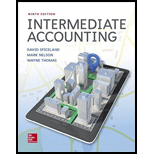
1.
Investment: The act of allocating money to buy a monetary asset, in order to generate wealth in the future is referred to as investment.
Equity investments: The financial instruments which claim ownership in the issuing company and pay a dividend revenue to the investor company, are referred to as equity securities. The investments in equity securities are referred to as equity investments.
Equity method: Equity method is the method used for accounting equity investments which claim a significant influence of above 20% but less than 50% in the outstanding stock of the investee company.
Debit and credit rules:
- Debit an increase in asset account, increase in expense account, decrease in liability account, and decrease in
stockholders’ equity accounts. - Credit decrease in asset account, increase in revenue account, increase in liability account, and increase in stockholders’ equity accounts.
To Journalize: The entries related to the investments during 2018, for Company N assuming the investment is made under equity method.
2.
To Prepare: The investment revenue account, for Company N.
3.
To Prepare: The investment account, of Company N in Company V.
4.
To Explain: The effect of investment by Company N on December 31, 2018, in the statement of
Want to see the full answer?
Check out a sample textbook solution
Chapter 12 Solutions
GEN COMBO INTERMEDIATE ACCOUNTING; CONNECT ACCESS CARD
- Accounts receivable:112000, Accounts payable:91000arrow_forwardWhat is the variable cost per unitarrow_forwardOn January 1, 2015, Accounts Receivable was $37,000. Sales on account for 2015 totaled $196,000. The ending balance of Accounts Receivable was $66,000. What is the amount of cash collected from customers?arrow_forward
- Accounting questions solvearrow_forwardBPR Company uses a job order costing system and has set a pre-determined overhead rate of 475% of direct labor cost. Job T-925 was charged with direct materials of $86,000 and with overhead of $95,000. Assume BPR Company prices its jobs at 72% above manufacturing cost. Calculate the price charged to the customer for Job T-925.arrow_forwardI am trying to find the accurate solution to this financial accounting problem with the correct explanation.arrow_forward
- Wiggles Right forecasted sales of $5,000 in October, $4,000 in November, and $4,000 in December. All sales are on credit. 40% is collected the month of sale and the remainder the following month. How much is collected from accounts receivable in November? HELParrow_forwardcalculate the ROE for smith maufacturing if they have ....? accountingarrow_forwardI don't need ai answer general accounting question solutionarrow_forward
- General accountingarrow_forwardPlease provide the solution to this financial accounting question using proper accounting principles.arrow_forward(PLEASE ANSWER PART B ONLY) CarniTrin is a manufacturer of Carnival costumes in a highly competitive market. The company's management team is seeking guidance on the use of financial performance measures to identify the key drivers of the company's financial performance and develop a strategy to improve it.The following data relate to the company for the year 2023:In its clothing division, the company has $18,000,000 invested in assets. After-taxoperating income from sales of clothing in 2023 is $2,700,000. Income for theclothing division has grown steadily over the last few years.The cosmetics division has $42,000,000 invested in assets and an after-tax operatingincome in 2023 of $5,700,000.The weighted-average cost of capital for CarniTrin is 10% and the 2022’s after-taxreturn on investment for each division was 15%.The general manager of CarniTrin has asserted that in the future, managers shouldhave their compensation structure aligned with their performance measures with…arrow_forward
 Intermediate Accounting: Reporting And AnalysisAccountingISBN:9781337788281Author:James M. Wahlen, Jefferson P. Jones, Donald PagachPublisher:Cengage Learning
Intermediate Accounting: Reporting And AnalysisAccountingISBN:9781337788281Author:James M. Wahlen, Jefferson P. Jones, Donald PagachPublisher:Cengage Learning
